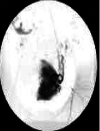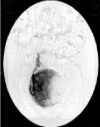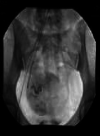Clinical Curative Effects and Influencing Factors of Uterine Artery Chemoembolization Combined with Uterine Curettage Treating with Cesarean Scar Pregnancy Patients
- PMID: 36204121
- PMCID: PMC9532077
- DOI: 10.1155/2022/7785573
Clinical Curative Effects and Influencing Factors of Uterine Artery Chemoembolization Combined with Uterine Curettage Treating with Cesarean Scar Pregnancy Patients
Retraction in
-
Retracted: Clinical Curative Effects and Influencing Factors of Uterine Artery Chemoembolization Combined with Uterine Curettage Treating with Cesarean Scar Pregnancy Patients.Evid Based Complement Alternat Med. 2023 Jul 19;2023:9756578. doi: 10.1155/2023/9756578. eCollection 2023. Evid Based Complement Alternat Med. 2023. PMID: 37501823 Free PMC article.
Abstract
Objective: To explore the clinical curative effects of uterine arterial chemoembolization (UACE) combined with uterine curettage treating with cesarean scar pregnancy (CSP) patients, and analyze the influencing factors of postoperative efficacy.
Methods: A total of 86 patients with CSP from January 2019 to December 2021 in the Gynecology ward of our hospital were selected and divided into the control group (n = 43) and the observation group (n = 43) according to the random number method. The control group was treated with an injection of methotrexate (MTX) combined with uterine curettage, and the observation group was treated with UACE combined with uterine curettage. Two months after the operation, the therapeutic effect, cesarean scar mass, and β-human chorionic gonadotropin (β-HCG) level were observed and compared between the two groups. The general conditions of patients in two groups were recorded, and the influencing factors of surgical efficacy in patients were analyzed using univariate analysis and a multivariate logistic regression model.
Results: After treatment, the total effective rate of the observation group was significantly higher than that of the control group (P < 0.05). The volume of intraoperative blood loss, hospitalization period, menstrual recovery time, mass disappearance time, and β-HCG recovery time of the observation group were lower than those of the control group (P < 0.05). Single factor analysis showed that the number of cesarean sections, gestational age, the largest diameter of the gestational sac, the thinnest muscular layer, and the type of CSP can all affect postoperative efficacy (P < 0.05). Multivariate logistic analysis showed that the gestational age, a maximum diameter of a gestational sac, the thinnest muscular layer, and the type of CSP were independent factors influencing the postoperative efficacy of the patients (P < 0.05).
Conclusion: UACE combined with uterine curettage for CSP can significantly improve the curative effect, reduce intraoperative bleeding, and improve the recovery time of postoperative-related symptoms. The gestational age of the patient, the maximum diameter of the gestational sac, the thinnest muscular layer, and the type of CSP can independently affect the therapeutic effect of CSP patients. Fully understanding the high-risk factors that affect the efficacy of treatment of CSP, timely preventive measures, and targeted care can effectively improve the prognosis and reduce the risk of CSP.
Copyright © 2022 Kewen Yu and Haifeng Zhou.
Conflict of interest statement
The authors declare that the research was conducted in the absence of any commercial or financial relationships that could be construed as potential conflicts of interest.
Figures




References
-
- Yin J. F., Qiong F. U., Song Q. The application of uterine arterial chemoembolization in the treatment of uterine scar pregnancy after cesarean section. Chinese and Foreign Medical Research . 2016;40(1):188–193.
-
- Liang F., He J. Methotrexate-based bilateral uterine arterial chemoembolization for treatment of cesarean scar pregnancy. Acta Obstetricia et Gynecologica Scandinavica . 2011;44(3):437–438. - PubMed
-
- Wan J., Wei-Jin G. U., Wang H. Y. Clinical application of bilateral uterine arterial chemoembolization in the treatment of massive hemorrhage due to cesarean scar pregnancy. Journal of Interventional Radiology . 2009;18(7):499–502.
-
- Tullius T. G., Ross J. R., Flores M., Ghaleb M., Kupesic Plavsic S. Use of three-dimensional power Doppler sonography in the diagnosis of uterine arteriovenous malformation and follow-up after uterine artery embolization: case report and brief review of literature. Journal of Clinical Ultrasound . 2015;43(5):327–334. doi: 10.1002/jcu.22210. - DOI - PubMed
Publication types
LinkOut - more resources
Full Text Sources

